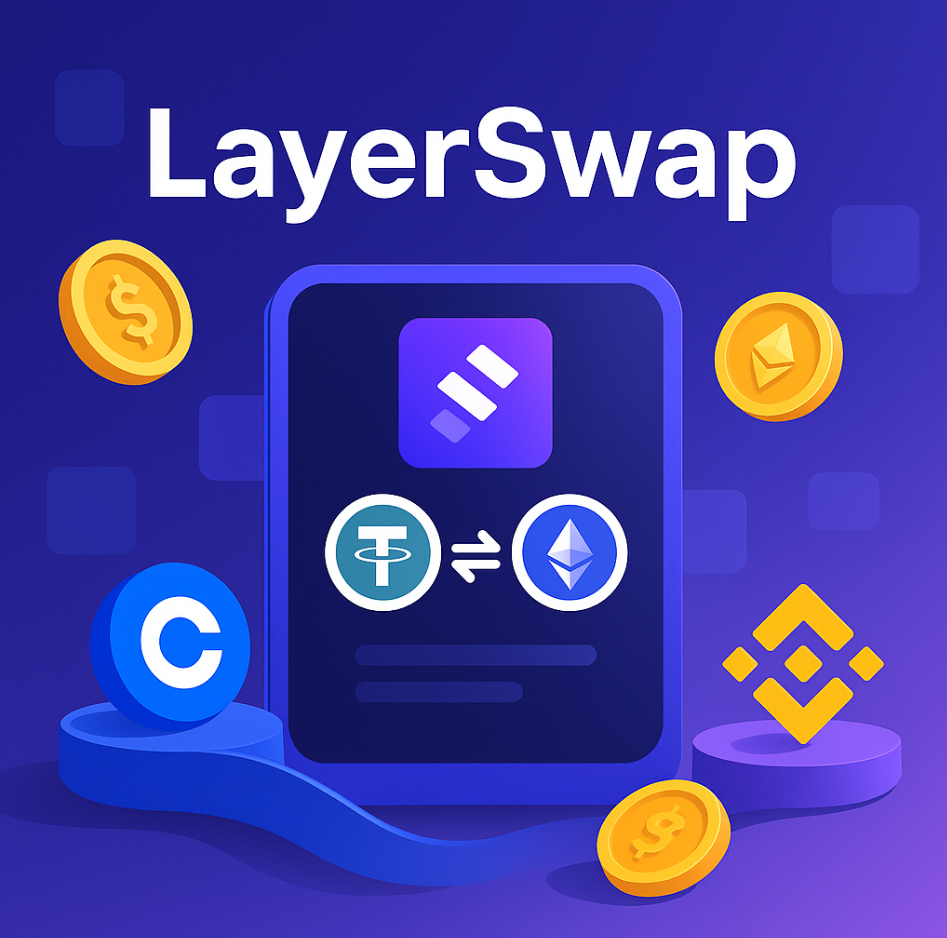
In 2025, as blockchain technology matures, users are increasingly relying on Layer 2 solutions to avoid Ethereum’s high fees and slow transactions. Yet, transferring assets between Layer 2 chains and centralized exchanges is still not user-friendly. LayerSwap has emerged to solve this with a secure, fast, and gasless transfer experience.
What Is LayerSwap and Why It's a Game Changer
LayerSwap is a decentralized protocol that allows users to move crypto assets between Layer 2 networks like Arbitrum, Optimism, and zkSync and centralized exchanges (CEXs) like Coinbase or Binance, without using Ethereum mainnet. The platform eliminates the need for complex bridges, reducing both cost and execution time.
Instead of manually bridging assets and paying ETH gas fees, LayerSwap users can transfer funds in a few clicks, with near-instant finality and zero gas.
Key Features of LayerSwap
LayerSwap offers several features designed to make cross-chain transfers efficient and accessible:
-
Gasless transfers by skipping Ethereum Layer 1
-
Support for major Layer 2s like Arbitrum, Optimism, Base, zkSync
-
Exchange integration with Coinbase and Binance
-
Fully non-custodial; users retain control of assets at all times
-
Real-time status tracking for transactions
-
Clean, beginner-friendly interface
-
Open-source and audited smart contracts for transparency
Pros and Cons of Using LayerSwap
Pros:
-
Avoids high Ethereum gas costs
-
Fast transactions (typically under 5 minutes)
-
Simplified process with minimal user interaction
-
Works with both wallets and centralized exchanges
-
Supports the most popular Layer 2 networks
Cons:
-
Still growing its support for tokens and networks
-
Dependent on exchange API stability
-
Not all assets or networks are currently supported
How to Use LayerSwap: A Beginner’s Guide
Using LayerSwap is straightforward. Here's a step-by-step process:
-
Visit the LayerSwap website
-
Connect your wallet (MetaMask, Coinbase Wallet, Trust Wallet, etc.)
-
Choose your Layer 2 source network (e.g., zkSync or Optimism)
-
Select the destination (another L2 or a CEX like Binance)
-
Enter the amount to transfer
-
Confirm the transaction in your wallet
-
Wait a few minutes for the transfer to complete
There’s no need to deal with bridge protocols, gas estimates, or complicated fee structures. LayerSwap manages all the backend logic for you.
What Industry Experts Are Saying
In a recent feature by Forbes, LayerSwap was praised as an essential protocol improving blockchain usability. Forbes highlighted the platform's ability to reduce user friction, lower costs, and enable faster adoption of Layer 2 technology.
Frequently Asked Questions
**What makes LayerSwap different from other bridges?**LayerSwap is not a traditional bridge. It connects directly to Layer 2s and exchanges, skipping Ethereum mainnet entirely.
**Is LayerSwap safe?**Yes. It uses secure, non-custodial smart contracts and never holds your assets.
**What exchanges does it support?**Currently, it supports Coinbase, Binance, and several others.
**Do I need ETH for gas fees?**No. Most routes are gasless thanks to its Layer 2 infrastructure.
**How fast are the transfers?**Typically, under five minutes.
**Can beginners use it?**Absolutely. The interface is built for users of all experience levels.
Conclusion
In a world where speed, affordability, and security are critical for crypto adoption, LayerSwap delivers on all three. Whether you're an NFT trader, a DeFi user, or simply managing your assets across networks, this protocol makes crypto transfers between Layer 2s and exchanges easier than ever.
By removing the reliance on Ethereum Layer 1 and simplifying the process, LayerSwap helps bridge the gap between decentralized infrastructure and centralized platforms. As the blockchain space continues to expand, tools like LayerSwap will become essential for every crypto user.




评论 (0)